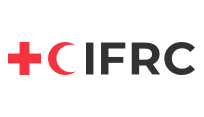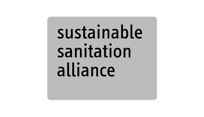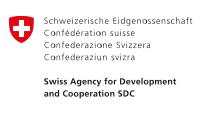Black Soldier Fly (BSF) waste processing is a biological aerobic process in which BSF larvae feed on organic matter. The grown larvae are harvested for animal feed for fish, poultry or pets; the residue from the larval feeding process is a valuable soil conditioner or fertiliser.

The Black Soldier Fly Hermetia illucens is a tropical fly that converts organic waste into marketable, high-value products. The process involves rearing the flies in nets, egg production, hatching and growing the hatched larvae fed with organic waste substrates. BSF larvae are placed on organic waste in trays where they feed for one to two weeks. Of the processed waste, 20% by weight can be harvested as grown larvae; 30% remains as frass (a mix of waste residues and larvae faeces). Larvae can be used or sold as a component of animal feed for fish, poultry, pigs or pets; the frass is a valuable soil conditioner or fertiliser.
Design Considerations
A BSF facility contains three units: a unit where BSF are reared (larvae pupation, fly mating, egg laying and egg hatching), a unit where waste substrates are prepared and fed to young larvae in trays and a unit where grown larvae and frass are harvested and, if required, post-processed into animal feed and soil conditioner or fertiliser. The rearing unit is a covered area allowing sunlight in to enhance the mating of flies. The equipment is trays and netted cages. The number of nets depends on how many eggs and young larvae should be produced daily, which depends on the amount of organic waste available to be processed. The processing unit consists of an area for waste substrate preparation (shredding, grinding, fermenting) and shallow trays in which waste substrate is placed together with the young larvae. Trays can be stacked vertically. The third unit is an area where the harvesting and killing of larvae as well as post-processing takes place. Depending on the product intended, post-processing can involve drying or the fat extrusion of larvae and composting T.1 of frass. The larvae should be fed regularly; feed levels should be monitored and adjusted.
Materials
BSF trays are commonly made of plastic (recycled PET, polypropylene), wood with plastic liners or concrete beds. Solid walls are unnecessary, but a roof for protection from rain and sun is required. The roof should be solid with an impermeable surface to enable regular cleaning. Other equipment such as shredders and sieves can be bought from suppliers. Temperature and humidity control equipment may be needed if ambient temperatures are unsuitable.
Applicability
BSF waste processing can be developed on-farm as a side activity, feeding harvested larvae directly to the chicken, fish or pigs on the farm. BSF waste conversion can also be developed as a small or medium business providing a livelihood opportunity by creating value from waste and selling the products to customers (retail or direct users). Waste substrates fed to BSF larvae should be purely organic so the waste must be segregated and prepared before use or come from pure organic waste sources. BSF waste conversion is most suited in climates with ambient temperatures between 25-30°C.
Operation and Maintenance
Proper operation and maintenance of a BSF facility are essential to ensure efficient waste conversion, high larvae production and a hygienic environment. This means maintaining suitable temperatures and humidity, providing pupation materials, and appropriate mating and egg-laying conditions and materials. Eggs must be harvested regularly. Neonates and larvae should be fed with a well-balanced substrate (e.g. food waste, manure or agricultural residues) to promote good growth for harvest. Maintenance practices include cleaning and hygiene measures to prevent moulds, pests and diseases. Equipment maintenance includes regular checks of crates, nets or mesh screens. Regular monitoring is crucial to detect problems early and take appropriate action. A well-maintained BSF facility minimises its environmental impact. Best practices in hygiene and pest control are also essential for its long-term success.
Health and Safety
Health risks to workers are minimal; they are not a concern if workers adopt basic precautions and hygiene practices and wear personal protective equipment X.4. BSF are known for their ability to reduce pathogens in the waste they consume but improper handling or incomplete decomposition can still pose a threat if not managed correctly. Precautions should be taken to prevent the composting setup from attracting pests (including houseflies and rodents) and creating health and safety issues. To be safe and effective the final BSF compost and frass should not contain any undigested or partially decomposed materials; quality control is needed.
Costs
The main costs of building a BSF facility are the covered area and the equipment (shredder, sieve, nets and trays). Costs may vary depending on the price of local materials and the degree of mechanisation. Costs, however, are generally low. The main operational costs to assess are manual labour and the power supply to operate the equipment. If waste is not delivered to the facility, the cost of transport and supply of organic solid waste must also be considered.
Social Considerations
Low social acceptability may reduce the sale and use of BSF products (larvae and frass). However, local animal feed production promotes resilience and independence from animal feed markets and protects farmers from rising costs.
Key Decision Criteria
Input Products
Organic Food/Kitchen Waste
Products from Processed Plastic
Animal Manure
Output Products
Animal Feed
Frass
Response Phase
Application Level
Management Level
Space Required
medium
Technical Complexity
medium
Objectives & Key Features
Nutrient recycling and production of animal feed, Waste diversion from disposal and GHG mitigation
Strength & Weakness
- Simple, robust technology
- Can be built and maintained with locally available materials
- Fast production of high-value products
- High-skill requirements for managing the reproduction unit (rearing of flies)
- Larvae feed best on clean organic waste with a high nutritional value and cannot digest woody materials.
- Suitable climate conditions are between 25-30°C
Selected References
Key guidance documents on BSF
Eawag, Sandec (2025): Practical BSF Knowledge Hub, Switzerland
Free e-learning on BSF
Eawag, Sandec (2021): Black Soldier Fly (BSF) e-Learning Series, Switzerland






